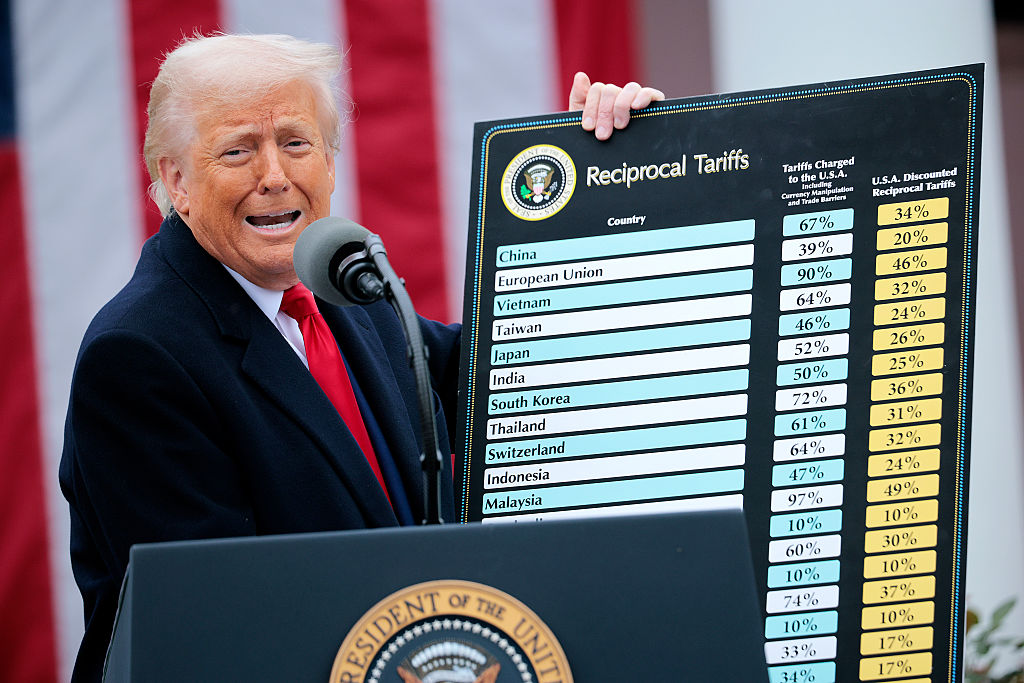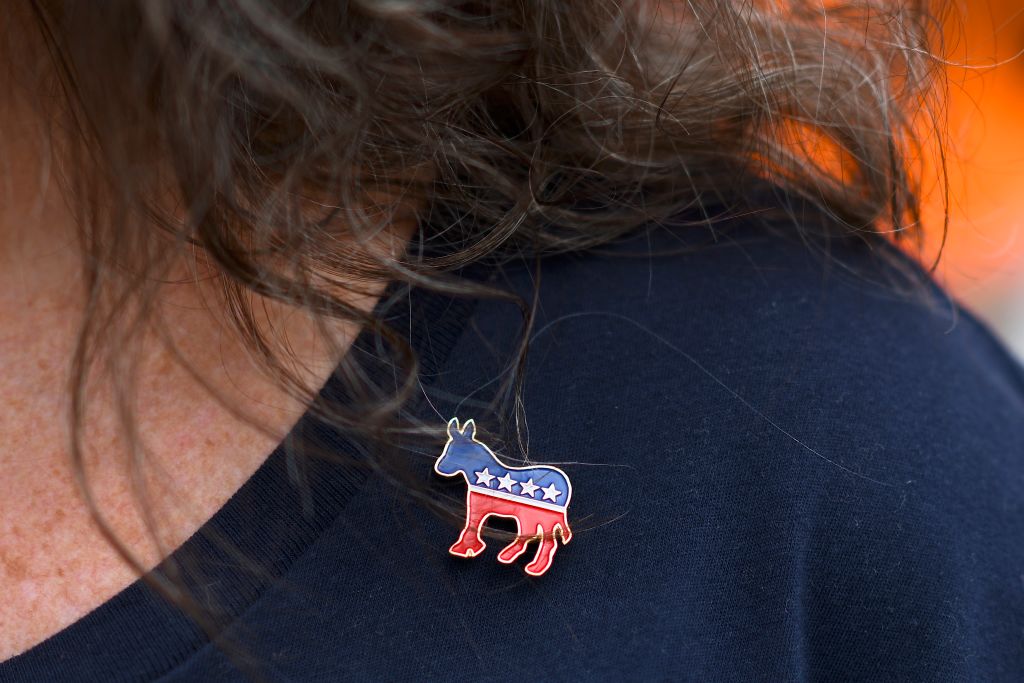The following is an excerpt from Yale University law professor Elizabeth Friedkin’s remarks to the 2026 International Federation of United Conscious Uncoupling Professionals.
When then-Representative Marjorie Taylor Greene first proposed the dissolution of the United States of America in 2023, many feared she was threatening a second Civil War, including most of us in this room. Over the past two years, however, we have witnessed a benign break-up that is now a beacon to dissatisfied land conglomerates the world over. I was skeptical when I was chosen to serve as arbitrator, but I will be the first to admit that I underestimated the shrewdness of Ms. Taylor Greene.
It was derided as a political stunt when Taylor Greene filed the national divorce papers in then-President Biden’s home state of Delaware, which has some of the longest waiting periods for petitions of irreconcilable differences. Critics did not appreciate that the six-month delay fostered the conditions for extended negotiations that made dissolution palatable to a healthy majority of the country.
What followed were long but fruitful hours that spawned the two nations we know today. The division of assets was relatively easy thanks to generations of geographic self-sorting into red and blue states. The delegations were unanimous in awarding sole custody of Puerto Rico and the District of Columbia to Democrats, as well as in the decision to continue to amicably co-parent the US Virgin Islands, Northern Mariana Islands, American Samoa and Canada.
Guam won its independence when both sides forgot to include it, which of course was regrettable. The “purple” states of Georgia, Michigan, Arizona, Wisconsin and Pennsylvania were given annual rotating membership in both confederations using the United Nations Security Council’s non-veto membership as a model, although Pennsylvania’s allegiance is up in the air, since its Catholic bishop has yet to approve a petition for annulment.
Republicans were awarded sole custody of the Marine Corps and Guantánamo Bay, while blue states acquired the Army, FBI and CIA, as well as 872 black sites in forty-two countries. The two sides agreed to split custody of the Navy, Coast Guard and Air Force, with control of these branches revolving between individual member states on a weekly basis. Democrats also received weekend visitations to the Space Force.
Outside of national security, the division of federal agencies was simple. Republicans didn’t want any of them, so Democrats received all of them. Red states eventually agreed to accept control of the Border Patrol as well as SWAT teams for the Departments of Education, Energy, the Interior, Health and Human Services, NASA and Amtrak in exchange for reassigning all TSA agents to blue-state airports. The prisoner exchange was also straightforward, with red states receiving January 6 insurrectionists, arms dealers and those who pray outside abortion clinics in exchange for every nonviolent drug offender.
The tensest moments of negotiation came from an unlikely source after representatives on all sides launched extended campaigns to preserve the one thing that held both parties together — sports. The major breakthrough came with what was once called the “national pastime.” Red states received the National League, blue the American League, and in a bipartisan act of solidarity they reversed every rule change adopted by Rob Manfred and jointly issued warrants for the ex-commissioner’s arrest, though not before he was able to escape through Houston International Airport.
The NFL agreed to play the Super Bowl only in swing states, which is why the February contest has recently been played in Green Bay and Detroit. The NBA opted to play only in China, while the NHL has operated out of Canada under the loving gaze of its indifferent co-parents.
With sports resolved, sorting the national debt was a cakewalk, which was surprising for about 30 trillion reasons. Red states balked at splitting the bill evenly. Luckily the international community stepped in, with representatives from China mediating from their respective embassies at Disneyland and Disney World. After several weeks of negotiation, the states agreed in principle to divide up all treasury debt according to the party affiliation of presidents dating back to the Carter administration. Republicans were surprised to discover that they were responsible for $17.71 trillion compared to the Democrats’ $13.58 trillion. The ledger was balanced when blue states sent $2 trillion in reparations to descendants of slaves living in Republican territory.
Of course, there have been bumps along the way, most famously in Guam, which was conquered by a paramilitary force led by El Chapo, whom the FBI had mistakenly classified as a nonviolent drug offender. He was released into a halfway house in California before walking unimpeded into Guadalajara. Despite CIA intel showing the cartel kingpin was fully rehabilitated, he emerged on Guam accompanied by international fugitive Rob Manfred and used it as a base from which to invade the Northern Mariana Islands.
The blue state/red state response was hampered because the Navy was patrolling the Mississippi River on behalf of Kentucky, and the Air Force was conducting an air show in Vermont at the time. Space Force was in space. The Coast Guard was stranded in Lake Huron and the Army’s newly launched all-female infantry deserted to Canada. Montana and Utah mobilized the Department of Education and Amtrak SWAT teams, respectively, but their guns were confiscated by TSA when they attempted to make a connecting flight in Hawaii.
The crisis may have exposed some of the agreement’s logistical hiccups, but there were many teachable moments along the way thanks to the pioneering leadership of Georgia Czarina Marjorie Taylor Greene, initiatives that all members of IFUCUP can incorporate into their own best practices.
This article was originally published in The Spectator’s April 2023 World edition.

























